Rift: Storm Legion hands-on
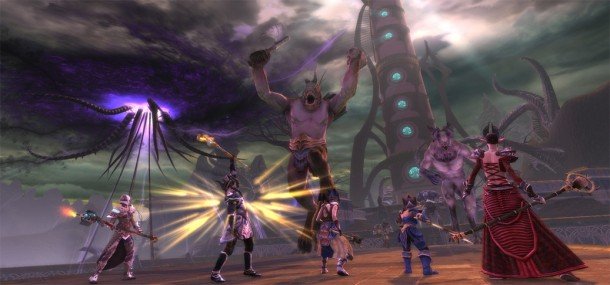
I'm a rogue, but I'm not sneaking and I'm certainly not playing with silly daggers. I'm staring straight into the eyes of a group of Storm Legion fanatics heading my direction and all I can do is smile. One push of a button sets my new torrent into action, throwing out a flamethrower-like cone of scalding destruction. Rift's Storm Legion expansion is a gigantic addition to arguably the most frequently updated MMO of its time and, like the foolish pile of dead before me, things are looking well-done.
Continents and quests
My hands-on session with the new Storm Legion expansion starts with Design Producer Hal Hanlin explaining just how massive the new continents are. He tells me that the Guardians' starting zone of Silverwood took about 25 geometric area chunks to create. In comparison, one area on the new continent took five separate sections, each with a maximum of 50 geometric area chunks. In total, the entire game has nearly three times as much area to explore.
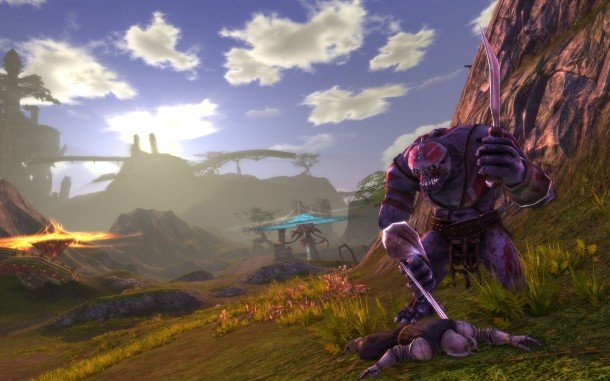
I begin my adventure riding north to conquer Brevane (one of the two new continents). As I travel the huge area, I begin to notice the landscape looks pleasantly different. The world itself looks richer, more unique, and feels more three-dimensional. Crags of valleys and destroyed cities have more areas to explore and the lighting and sky look more crisp and atmospheric. The team at Trion tells us that the Storm Legion expansion is taking the game's art and visual design to a new level, making enemies more unique and environments more plane-inspired. They want to make the players really see what happens when the Ascended aren't around to protect a land from planar influence. Design Director Simon Ffinch smiles and tells me he loves the new depth to the land because it allows him to get really clever with the placement of collectible artifacts.
The questing feels different, too. Rather than continuing to mash quests up into hubs of exclamation marks, Storm Legion introduces the new mechanic of Carnage quests. As I put the beatdown on some Storm Legion noobs, random quests begin to pop up that are associated with the kills I'm already making. Similar to Guild Wars 2's questing, carnage quests are comprised of the standard kill-and-gather variety, but they make the world feel slightly more organic.
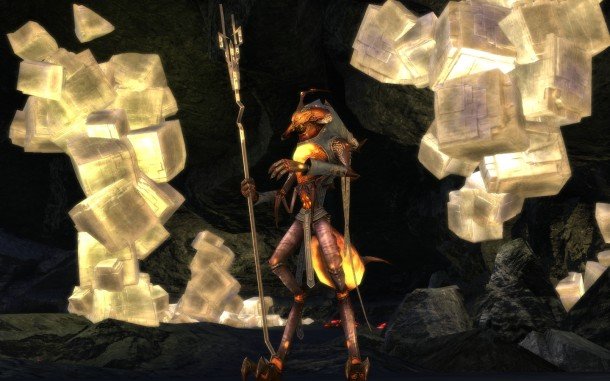
I ask the team if the new continents will have any content for lower-level players and regrettably the answer is no. The new continents are meant for characters leveling from 50 to the new level cap of 60. Senior Producer Adam Gershowitz tells me that the entire team went back and forth on this for a long time, ultimately deciding that the improvements and perks added to the game have streamlined the progression through the first 50 levels. Gershowitz says he is confident that players who want to start new characters will find themselves at level 50 much quicker this time around.
New souls and old
The first thing I notice about the new mage melee soul, Harbinger, is the weapons. The soul lets me summon a two-handed sword, a two-handed axe, and a scythe. Each weapon's blade are made of light and contains its own passive bonuses like additional healing from life spells or extra slashing damage with a chance for more damage on critical hits. I stick with the scythe for its balanced mix of healing and damage—plus it makes me feel like a total badass.
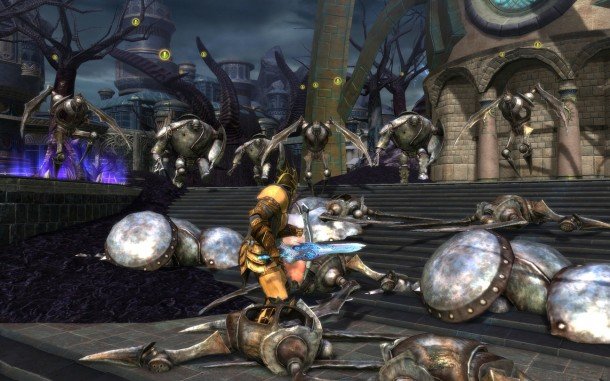
Scythe in hand, I decide to take on a pack of Storm Legion recruits and am surprised at how well the harbinger fares in melee range despite not having any additional armor buffs. Gershowitz explains that, rather than buffing the harbinger alone, the team focused on improving melee survival across the board. Feeling confident, I decide to take on a nasty-looking elite drake. I die. Ticked, I yell at Gershowitz to explain how I could possibly fail. He reminds me that, while mages can use harbinger to effectively engage in melee combat, they are by no means an adequate tank.
The biggest gaming news, reviews and hardware deals
Keep up to date with the most important stories and the best deals, as picked by the PC Gamer team.
Seeking a little easier survival, I decide to try out the warrior's new tempest soul. Warriors have never been my favorite class in Rift, but the tempest is less a warrior and more of a tiny embodiment of Zeus. Nearly every attack is associated with throwing bolts of lightning and the electrocution of your adversaries. A pack of legion members quietly whispering sweet nothing at each other warrants the use of my favorite ability, double pulse—an attack that throws two lightning grenades in quick succession. Any remaining stragglers I melt down with gigantic area-of-effect lightning tendrils. My inner-Palpatine is pleased.
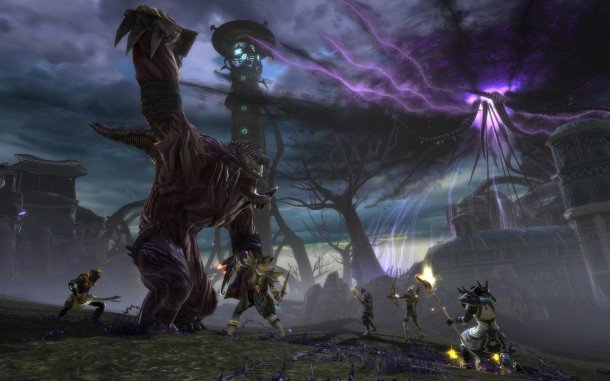
As fun as playing a pseudo-Sith in Rift is, however, my favorite soul is the rogue's tactician. The tactician uses a mix of gadgets and torrents to create a unique steampunk-meets-engineer feel. Alone, I can build up combo points via my bow. My combo points maxed, I can use one of three torrents to stream a cone of damage in front of me or use the pent-up power to shoot a devastating beam of energy. I prefer the fire-based infernal torrent, but the curative torrent is fantastic in groups. Picture a greenish plume of flames that heals anyone it touches. I begin to cackle as I ran around my small group healing by burning them with green fire.
The tactician also uses remotes and cores, gadgets that benefit the rogue or groups with buffs. Remotes are small mechanical devises that hover over the rogues head for a short period of time. Some provide protection from damage while others heal the rogue. Cores are essentially Rift's take on shaman totems from World of Warcraft. The tactician throws down a core and it pulses out rings that give benefits to the group. Unfortunately, a group can only have one core deployed at a time. Other press members were enjoying the tactician, and when we grouped, we'd constantly overwrite each other's cores. It reminded me of playing a bard during Rift's launch, when battling for buff superiority became a tiresome mini game.
Dimensions, aka player housing
I don't normally think of interior decorating as an integral part of my online hero fantasy, but Rift's new Dimensions make a compelling argument. To start, there are five different Dimensions that each has its own unique atmosphere for you to build in. I don't use the word "build" lightly -- players have incredible freedom to place objects wherever they want. I place a jar knee-high in the air and a flower pot, wood plank, and book above each previous object to create a tiny jumping puzzle. Ffinch says that Dimensions are meant to be a place where players can express themselves without having tons of restrictions. They want players to create and build their own homes and works of art. For example, one member of the team created a stationary pirate ship house from objects like bedrolls, wood planks, trees, and various tables.
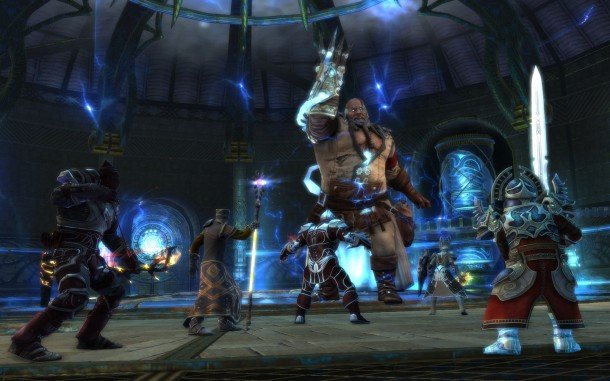
I'm nowhere near that creative, being happy just to move objects around with the easy-to-use controls, which feel like a similar (albeit simplistic) version of object controls in various modding programs like Skyrim's Creation Kit. Placing one item can change the music of my zone; another alters the sky above my home to be a starry night filled with moons and celestial symbols. Some of the items will be rewards for achievements or collections, others will be purchased from vendors, while many more will be created through player crafting.
Dimensions will also have neat social elements that will allow players to visit other players' creations and "like" them, increasing their public rating. Don't want visitors? Turn your Dimension to private. If you're married in Rift, you can share control of a Dimension with your significant other. Although the developers warn me that this could result in the redecoration of my man cave when offline. Man cave threats aside, I feel as though Rift handed me adult Legos and told me to just have fun.

